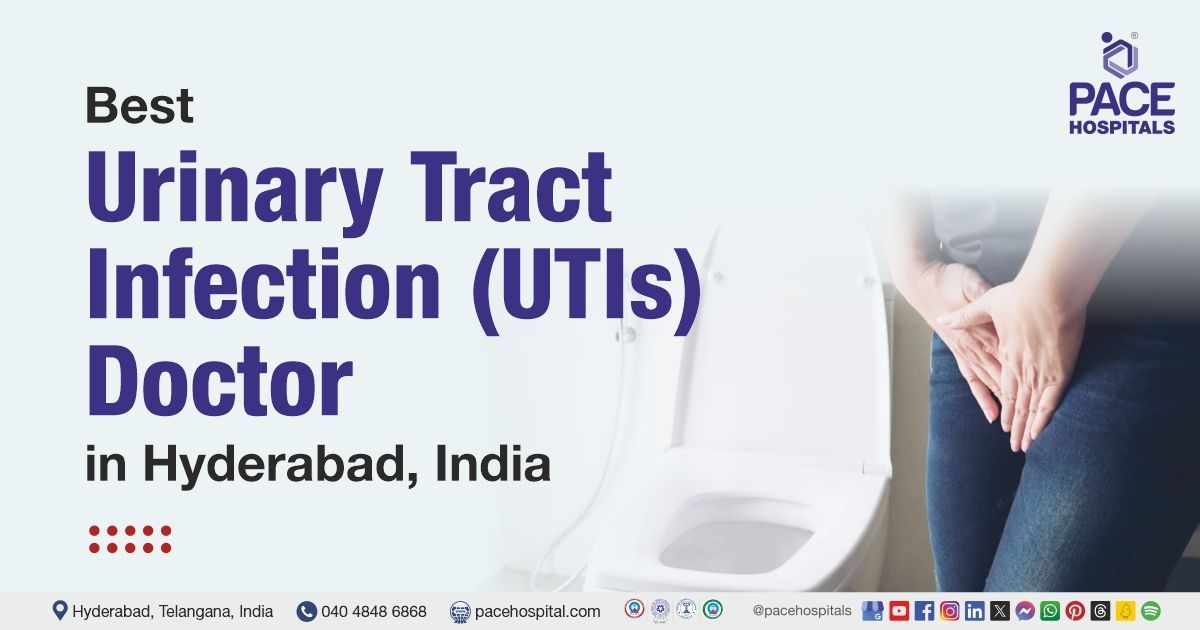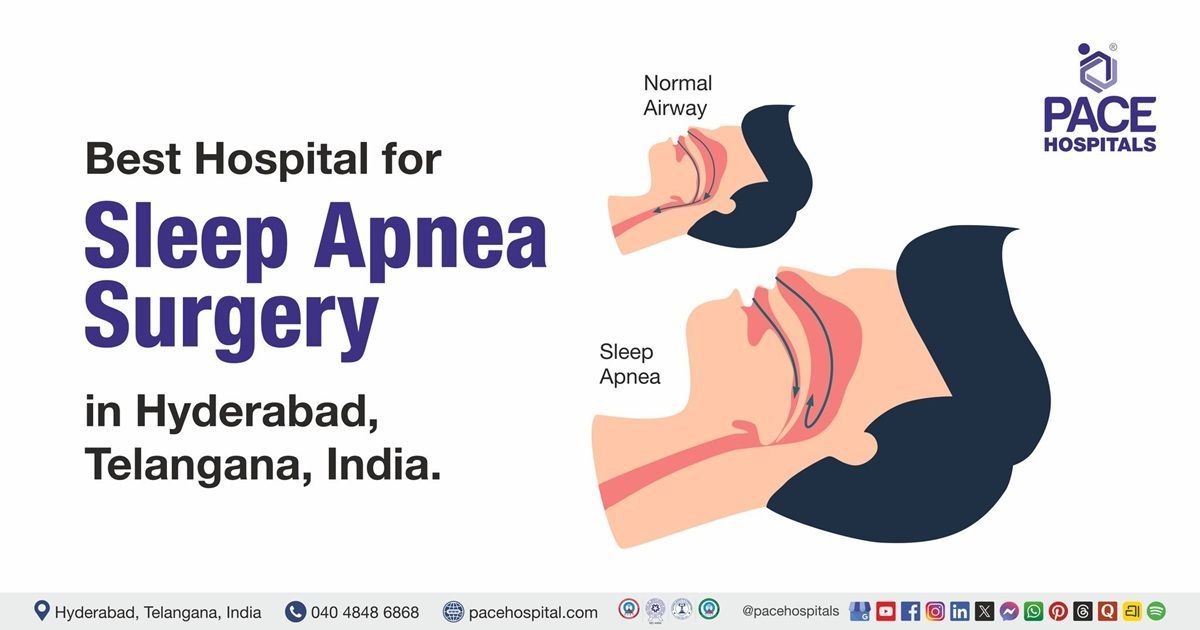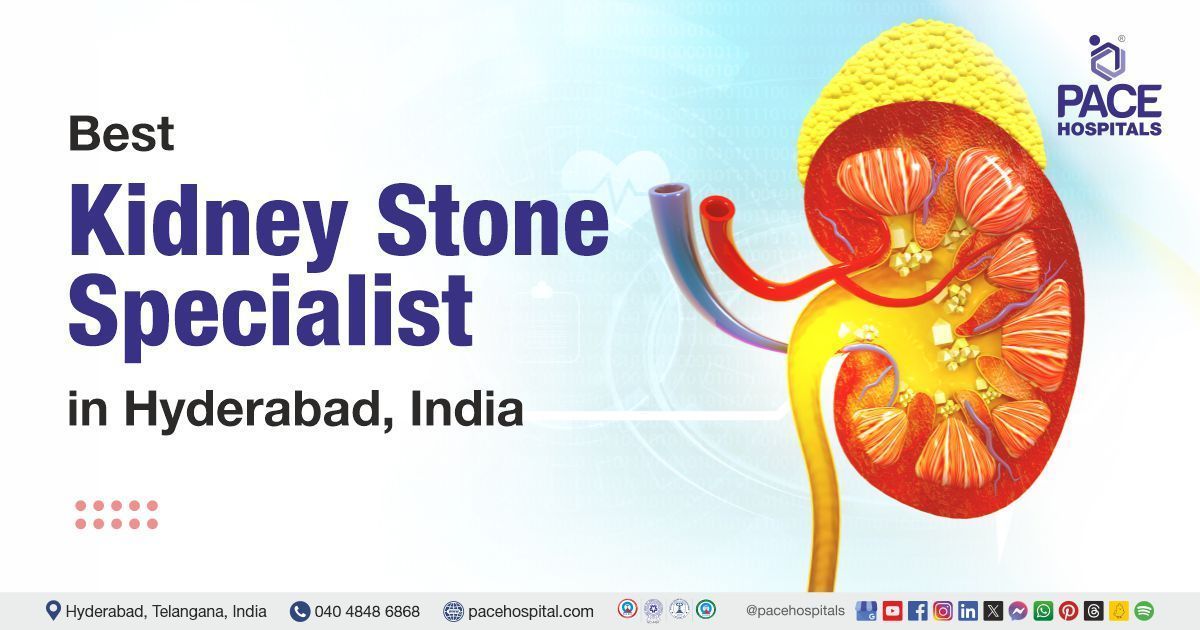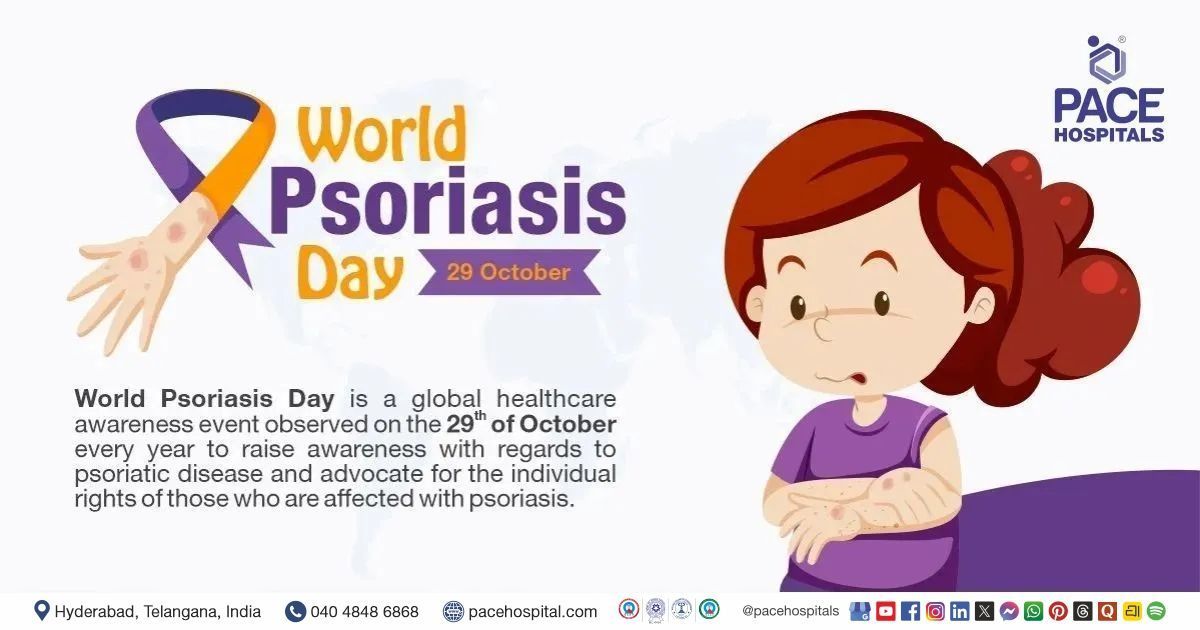Laparoscopic Vesicovaginal Fistula (VVF) Repair
Understanding Vesicovaginal Fistula (VVF)
A Vesicovaginal Fistula (VVF) is an abnormal connection between the urinary bladder and the vagina, resulting in continuous leakage of urine through the vagina. It is one of the most distressing urological and gynecological complications a woman can experience, often affecting physical comfort, emotional health, and social well-being.
VVF commonly develops after gynecological surgeries, difficult childbirth, pelvic trauma, or radiation therapy. While it causes no immediate life-threatening condition, it has a profound impact on quality of life — leading to embarrassment, isolation, and psychological distress.
At PACE Hospitals, Hyderabad, expert
urology doctors and gynecologic surgeons use advanced laparoscopic and minimally invasive techniques to repair vesicovaginal fistulas with high success rates and minimal scarring, helping women regain control, confidence, and comfort.
Causes of Vesicovaginal Fistula
VVF can arise from a range of surgical, obstetric, or traumatic causes.
Common Causes Include:
- Post-surgical complication — particularly after hysterectomy (uterus removal surgery)
- Prolonged obstructed labor or instrumental vaginal delivery
- Radiation therapy for pelvic cancers (cervical, bladder, or endometrial cancer)
- Pelvic trauma or accident involving the urinary tract
- Infections or inflammatory diseases of the pelvis
- Malignancy (cancer invading the bladder or vagina)
Among these, hysterectomy-related fistulas are the most common in developed and urban healthcare settings, while obstetric fistulas still occur in rural regions due to inadequate maternal care.
Symptoms of Vesicovaginal Fistula
Symptoms usually appear a few days or weeks after surgery or delivery. The most characteristic sign is continuous leakage of urine through the vagina, even when the patient attempts to urinate normally.
Typical Symptoms Include:
- Constant urinary leakage from the vagina
- Foul-smelling vaginal discharge
- Recurrent urinary tract infections (UTIs)
- Irritation and soreness in the vaginal area
- Pelvic or lower abdominal pain (in some cases)
- Emotional distress and social embarrassment
If not treated promptly, the condition can lead to skin infections, depression, marital strain, and chronic bladder irritation.
Diagnosis of Vesicovaginal Fistula
Early and accurate diagnosis is critical to successful treatment.
Diagnostic Evaluation at PACE Hospitals Includes:
- Clinical Examination: Pelvic examination to assess the site, size, and number of fistulas.
- Dye Test (Methylene Blue Test): A safe, simple procedure where a dye is instilled into the bladder to see if it leaks into the vagina.
- Cystoscopy (Bladder Endoscopy): Helps visualize the internal bladder wall and identify the exact fistula location.
- CT Urogram / MRI Pelvis: Used for complex or multiple fistulas, providing detailed imaging of surrounding structures.
The urology team at PACE Hospitals works closely with gynecology and radiology and imaging departments to ensure a comprehensive, accurate diagnosis before surgery.
Treatment Options for Vesicovaginal Fistula
The goal of VVF repair is to close the fistula completely and restore normal urinary continence while preserving vaginal function.
- Conservative Management (Small Fistulas): For small, recent fistulas (especially after surgery), a temporary urinary catheter may be placed for 3–6 weeks to allow spontaneous healing. However, this works only in rare cases.
- Surgical Repair — The Definitive Treatment: If the fistula does not heal with conservative methods, surgical correction becomes necessary. There are three primary approaches:
- Transvaginal Approach:
- Suitable for low, easily accessible fistulas.
- Shorter recovery but limited access for complex cases.
- Transabdominal (Open) Approach:
- Used for high or complex fistulas involving other organs.
- Involves a larger incision and longer hospital stay.
- Laparoscopic Approach (Preferred Modern Technique):
- Minimally invasive
- Uses 3–4 tiny incisions
- Allows precise visualization and dissection
- Faster healing and superior cosmetic outcome
Laparoscopic Vesicovaginal Fistula Repair – Step-by-Step
At PACE Hospitals, the laparoscopic approach is the gold standard for most VVF cases, offering excellent outcomes with less pain and shorter recovery.
Procedure Overview:
- Anesthesia: The patient is given general anesthesia for complete comfort.
- Port Placement: Small keyhole incisions are made to insert the laparoscope and instruments.
- Identification of Fistula: The bladder and vagina are carefully separated to locate the exact fistulous tract.
- Excision and Repair: The fistula tract is excised and the bladder and vaginal walls are individually closed in layers using absorbable sutures.
- Interposition Flap (Optional): A tissue flap (usually omentum or peritoneum) may be placed between the bladder and vagina to enhance healing and reduce recurrence.
- Catheterization: A urinary catheter is placed for 10–14 days post-surgery to allow proper healing.
Duration & Hospital Stay:
- Surgery Time: 2–3 hours (depending on complexity)
- Hospital Stay: 2–4 days
- Recovery: Most patients return to normal activities within 2–3 weeks.
Advantages of Laparoscopic VVF Repair
- Minimally invasive (tiny scars, faster healing)
- Less postoperative pain
- Shorter hospital stay
- Faster return to work and routine
- Reduced infection risk
- Excellent cosmetic and functional outcomes
Laparoscopy provides magnified visualization, allowing surgeons to operate with millimeter precision, ensuring complete fistula closure and minimal recurrence.
Postoperative Care and Recovery
- Catheter care: Keep it clean and avoid kinks to ensure proper drainage.
- Fluid intake: Drink 2–3 liters of water daily.
- Hygiene: Maintain good perineal hygiene to prevent infection.
- Activity: Avoid strenuous activity, heavy lifting, or sexual intercourse for at least 6–8 weeks.
- Follow-up: Regular check-ups with your urologist are crucial to monitor healing.
At PACE Hospitals Hyderabad, patients receive personalized recovery guidance from surgeons, nurses, and physiotherapists, ensuring a smooth post-surgical experience.
Success Rate and Outcomes
At PACE Hospitals Hyderabad, the success rate of laparoscopic VVF repair exceeds 95%, thanks to:
- Advanced laparoscopic technology
- Experienced multidisciplinary surgical teams
- Meticulous preoperative planning
- Comprehensive follow-up care
Patients typically regain normal urinary continence and improved quality of life within weeks of recovery.
FAQs on Laparoscopic Vesicovaginal Fistula (VVF) Repair
What causes vesicovaginal fistula?
VVF commonly occurs after hysterectomy, prolonged labor, pelvic radiation, or injury to the bladder during surgery.
How is a vesicovaginal fistula diagnosed?
Diagnosis involves a pelvic exam, dye test, cystoscopy, and imaging (CT or MRI) to locate the fistula and plan surgical repair.
What are the symptoms of a vesicovaginal fistula?
Constant urine leakage, vaginal wetness, foul discharge, recurrent infections, and pelvic discomfort are common symptoms.
What is the success rate of laparoscopic VVF repair?
At PACE Hospitals, the success rate exceeds 95%, with excellent recovery and restored continence.
How long is recovery after VVF repair?
Most patients recover within 2–3 weeks and can resume daily activities after catheter removal. Full healing takes around 6–8 weeks.
How much does VVF repair cost in Hyderabad, India?
At PACE Hospitals, Hyderabad, laparoscopic VVF repair costs ₹1,75,000–₹3,00,000 (USD 2,100–3,600) depending on the case and hospital stay.
What is a vesicovaginal fistula (VVF)?
A VVF is an abnormal opening between the bladder and vagina, causing continuous urine leakage. It’s often due to surgery, childbirth, or trauma.
What is laparoscopic VVF repair?
It’s a minimally invasive surgery where the fistula is closed using keyhole incisions, offering faster recovery and minimal scarring.
What are the benefits of laparoscopic surgery over open surgery?
It offers smaller incisions, less pain, faster healing, lower infection risk, and better cosmetic outcomes.
Why choose PACE Hospitals for VVF treatment?
PACE Hospitals offers advanced laparoscopic facilities, experienced urology surgeons, 24×7 ICU care, and compassionate patient support for VVF repair.
Share on
Request an appointment
Fill in the appointment form or call us instantly to book a confirmed appointment with our super specialist at 04048486868












